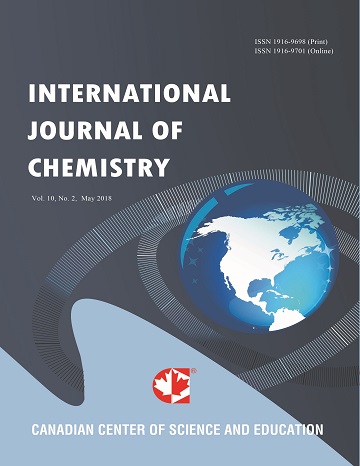A Sensitive and Low-cost Analytical Method for the Electrochemical Determination of Quercetin, Based on 1-Ethylpyridinium Bromide/Carbon Paste Composite Electrode
- Francis Tchieno
- Ignas Tonle
- Evangeline Njanja
- Emmanuel Ngameni
Abstract
We report a simple, sensitive and low-cost electrochemical procedure for the quantification of quercetin (QCT), a flavonoid and an antioxidant, based on 1-ethylpyridinium bromide modified carbon paste electrode. A 1-ethylpyridinium bromide/carbon paste composite electrode was used. The cyclic voltammogram of QCT showed two oxidation peaks at +0.575 V (vs Ag/AgCl/3M KCl) and +0.865 V (vs Ag/AgCl/3M KCl), and a reduction peak at +0.371 V (vs Ag/AgCl/3M KCl) in HCl/KCl solution at pH 1. Differential pulse voltammetry (DPV) analysis in HCl/KCl at pH 1 showed three well-defined oxidation peaks while a single peak was recorded in phosphate buffer at pH 3. The peak currents of QCT significantly increased at the 1-ethylpyridinium bromide modified electrode in comparison with those recorded at the bare carbon paste electrode. This allowed the use of adsorptive stripping voltammetry to develop a simple and sensitive electroanalytical method for the determination of QCT. Key experimental parameters such as pH of the supporting electrolyte, the preconcentration time, the electrolysis potential, electrode composition, QCT concentration and interferents were investigated. The current response was found to be directly proportional to the concentration of QCT in the range from 2.48 x 10-7 M to 7.43 x 10-6 M, leading to a detection limit of 4.48 x 10-8 M. The developed analytical method was successfully applied to the determination of QCT in human urine samples.
- Full Text:
 PDF
PDF
- DOI:10.5539/ijc.v7n2p27
Index
Contact
- Albert JohnEditorial Assistant
- ijc@ccsenet.org
